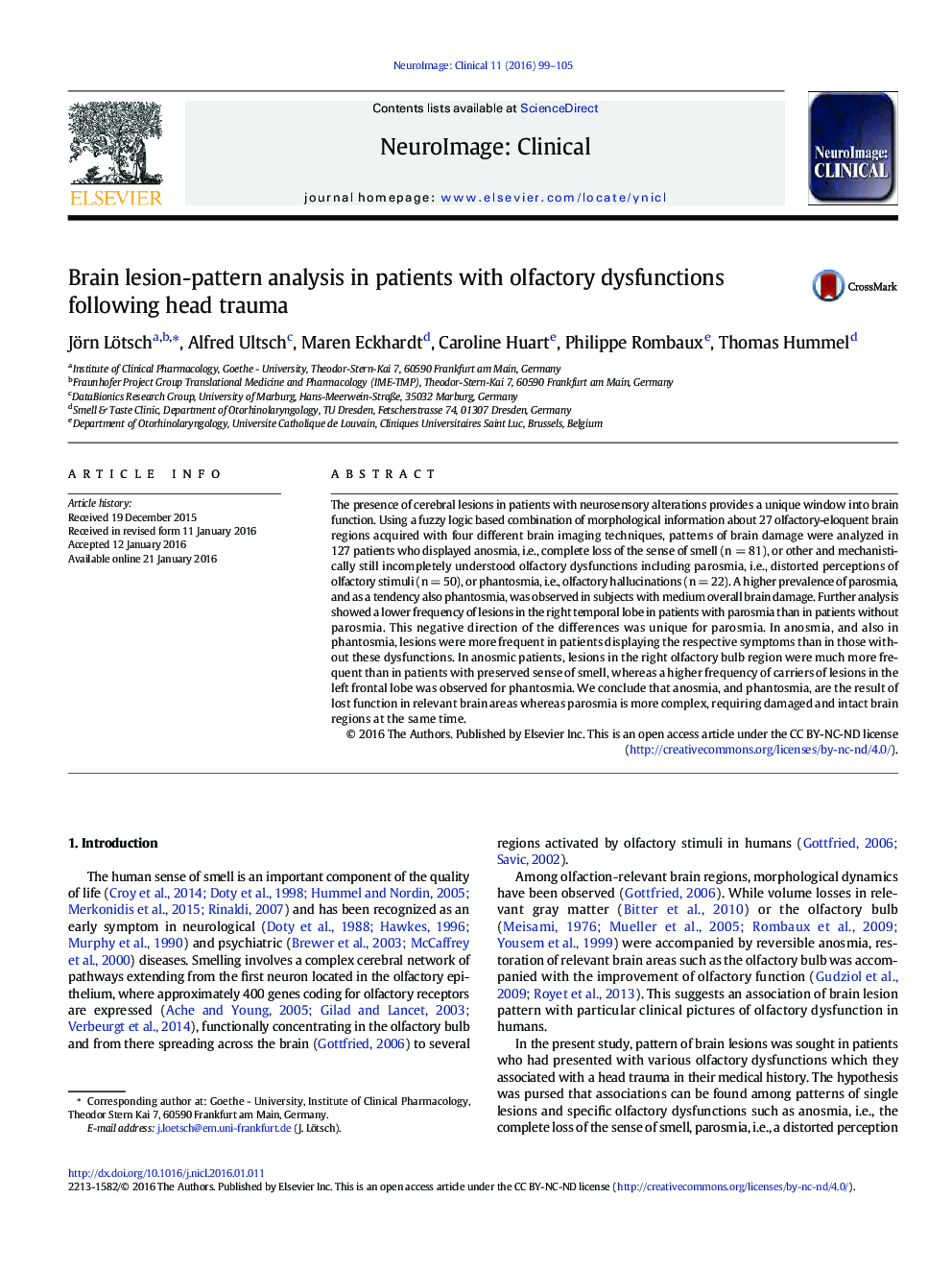| کد مقاله | کد نشریه | سال انتشار | مقاله انگلیسی | نسخه تمام متن |
|---|---|---|---|---|
| 3074902 | 1580956 | 2016 | 7 صفحه PDF | دانلود رایگان |
• Brain lesion pattern were investigated by means of MRI techniques in 127 patients with a history of head trauma.
• A fuzzy-logic based combination of morphological information about 27 olfactory-eloquent brain regions was analyzed.
• Anosmia was associated with a negative function pattern, i.e., with damage, in particular of the olfactory bulb.
• Parosmia, a distorted perception of odors, by contrast required intact brain regions along with damages.
The presence of cerebral lesions in patients with neurosensory alterations provides a unique window into brain function. Using a fuzzy logic based combination of morphological information about 27 olfactory-eloquent brain regions acquired with four different brain imaging techniques, patterns of brain damage were analyzed in 127 patients who displayed anosmia, i.e., complete loss of the sense of smell (n = 81), or other and mechanistically still incompletely understood olfactory dysfunctions including parosmia, i.e., distorted perceptions of olfactory stimuli (n = 50), or phantosmia, i.e., olfactory hallucinations (n = 22). A higher prevalence of parosmia, and as a tendency also phantosmia, was observed in subjects with medium overall brain damage. Further analysis showed a lower frequency of lesions in the right temporal lobe in patients with parosmia than in patients without parosmia. This negative direction of the differences was unique for parosmia. In anosmia, and also in phantosmia, lesions were more frequent in patients displaying the respective symptoms than in those without these dysfunctions. In anosmic patients, lesions in the right olfactory bulb region were much more frequent than in patients with preserved sense of smell, whereas a higher frequency of carriers of lesions in the left frontal lobe was observed for phantosmia. We conclude that anosmia, and phantosmia, are the result of lost function in relevant brain areas whereas parosmia is more complex, requiring damaged and intact brain regions at the same time.
Journal: NeuroImage: Clinical - Volume 11, 2016, Pages 99–105
